Zesty and wonderfully simple to create, this Olive Oil and Yogurt cake has an incredibly moist crumb and a fluffy, melt-in-the-mouth texture. Layers of unexpected flavour come through thanks to extra-virgin olive oil, creamy yogurt and orange zest. A lovely treat as is or make it even more special with a gorgeous blood orange glaze.
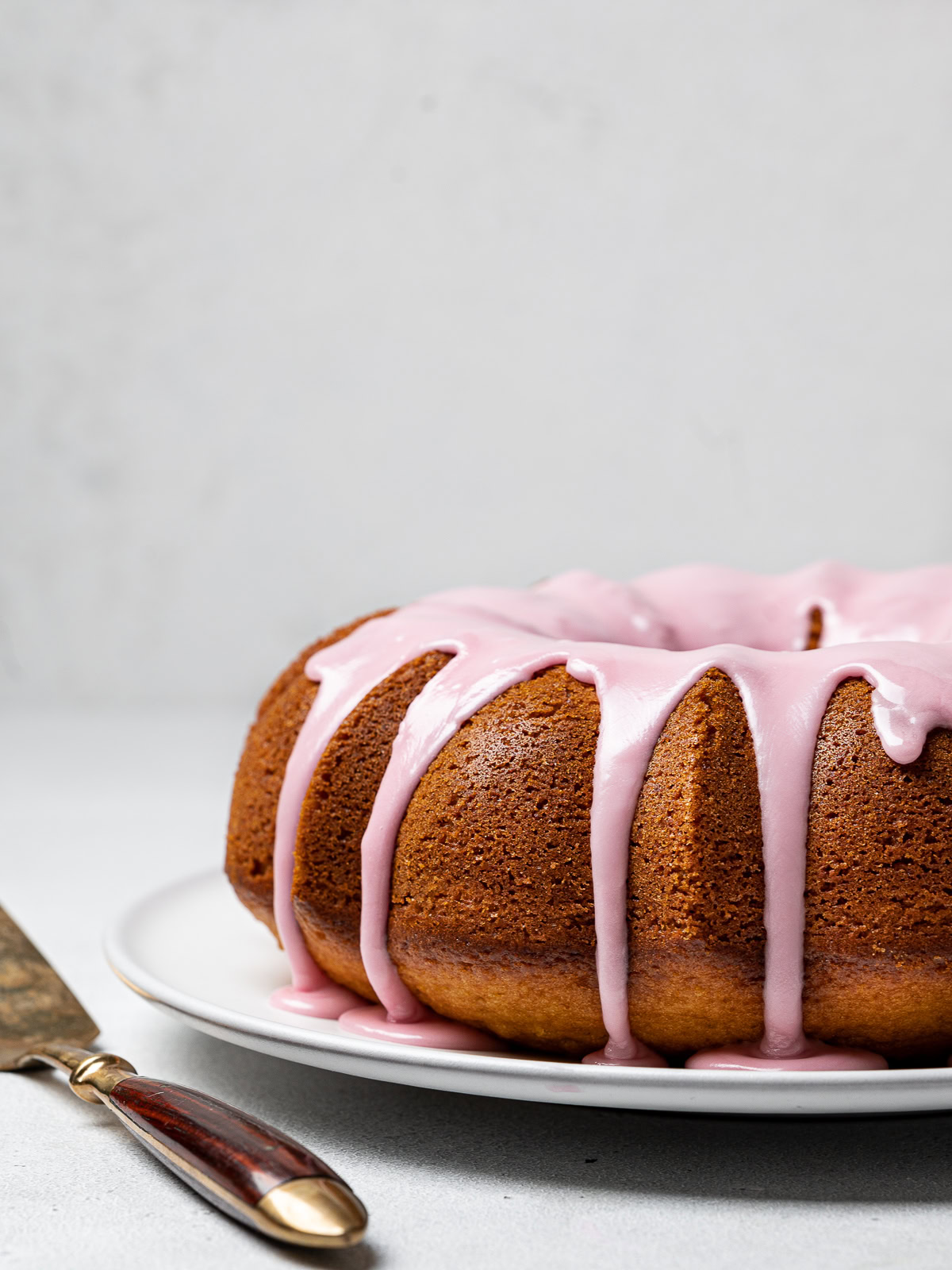
We are in the thick of citrus season so there’s a reasonable chance you have a few blood oranges sitting somewhere on your counter or in your crisper drawer. If you do, I encourage you to use up a few to make this simple olive oil and yogurt cake. It’s an incredibly moist, golden crumbed cake with a humble list of ingredients that is a breeze to make.
The combination of olive oil and whole-milk yogurt ensure the cake stays spongy, moist, and tender for days. Orange zest perfumes it ever so slightly and elevates the character of the olive oil. Because the cake is not too sweet, it can be enjoyed for breakfast as well as dessert.
We love it just as is but during these cold, dark, winter months, a lovely pink-hued frosting made with blood orange juice will dress it up beautifully and offer everyone some cheer. Frosted or unfrosted, this is a lovely cake with a heavenly crumb that tastes even better the next day. You are going to love it.
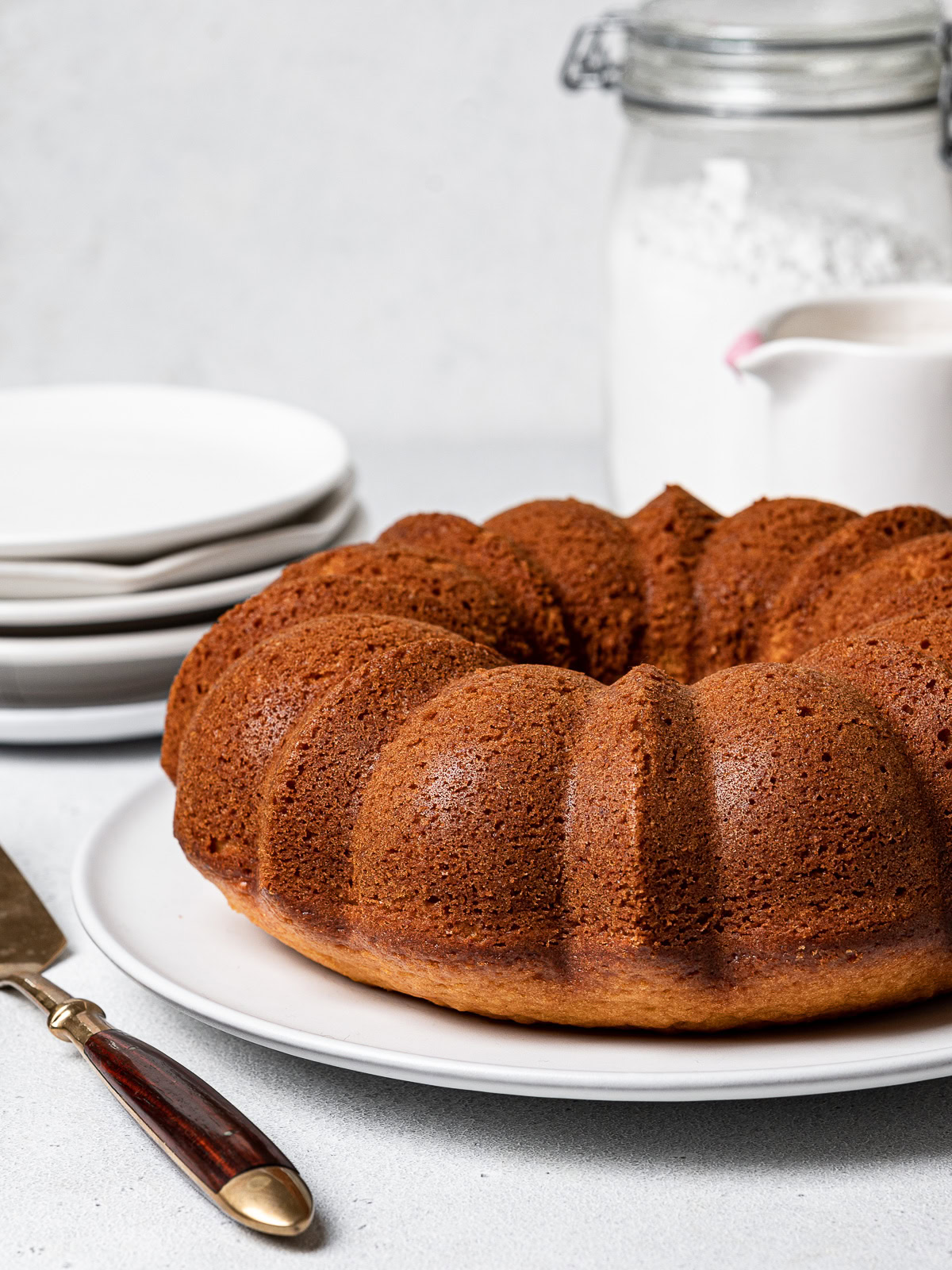
Why You’ll Love This Recipe
- Make this cake once and I think you’ll agree the beauty of this olive oil and yogurt cake lies in its simplicity. It requires few ingredients and shouldn’t take you longer than 15 minutes to throw together.
- Infused with fresh orange zest, this olive oil and yogurt cake will bring cheer to your afternoon snack break.
- This cake has an impossibly moist and tender crumb with a slightly crispy exterior.
- An easy to make cake that is perfect for any special occasion—hello Easter or Mother’s Day brunch!
- Thanks to olive oil, the texture and flavour of this cake keeps well for days.
Key Ingredients and Substitutions
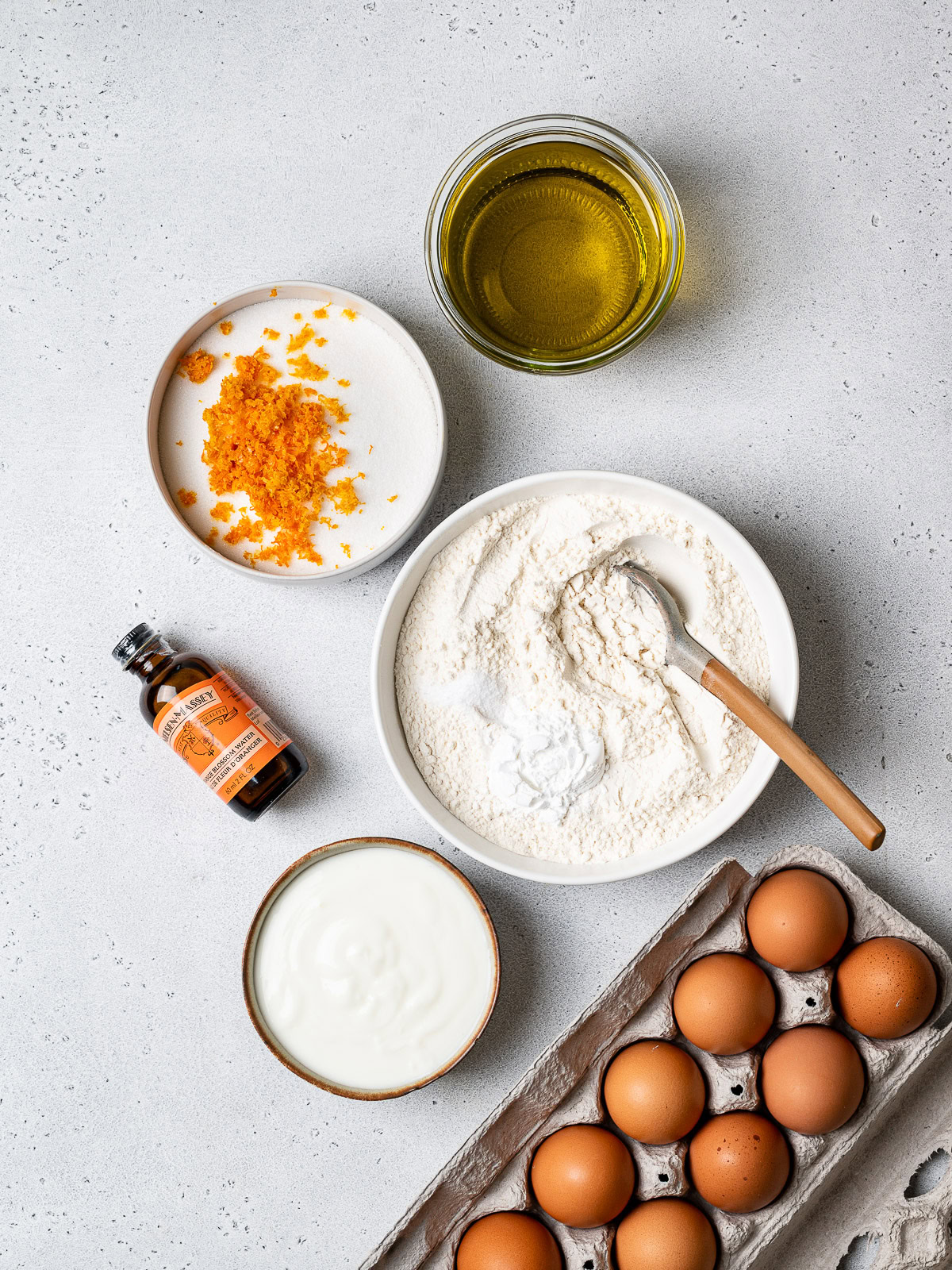
- Flour – I use unbleached all-purpose flour for this cake. I haven’t tested it with a gluten-free flour blend but I suspect it would work just fine.
- Baking powder – To give the cake rise and keep it light and fluffy, we use a good amount of baking powder.
- Sugar – I used regular white sugar for this recipe but I sometimes use cane sugar and it works just as well.
- Eggs – You will need 4 (room temperature) eggs.
- Olive oil – Since the olive oil is a prominent ingredient in this cake, be sure to use a good one. It doesn’t have to be expensive, but it shouldn’t be too strong or heavy. Colavita or Bertolli are both good grocery-store brands to use here, or even a Kirkland brand. If you are in the US, Lucini is an excellent choice here.
- Yogurt – For best results, use a whole milk, plain yogurt. Greek yogurt will work but the cake will be a little denser and a tad less moist.
- Orange zest and orange blossom water – There is no citrus juice in this cake, but I do like to include the zest of any orange variety and orange blossom water to add aromatic dimension to the cake without making it overtly citrusy. I used blood orange zest but any orange zest will work. You can substitute the orange blossom water with vanilla extract, if you wish. Feel free to use the zest of a lemon or grapefruit, if you prefer.
For the optional frosting:
- Blood orange juice – Optional, for frosting the cake. Blood oranges are in season right now and their crimson-coloured juice makes a beautiful frosting.
- Powdered (icing) sugar – For best results, use a fairly fresh icing sugar. Organic icing sugar is very pricey right now but it really does make a better tasting frosting. If you’re interested, this article explains why.Regardless of which one you are using, be sure to sift it for a really smooth glaze.
- Yogurt and honey – Both are optional but the tanginess of the yogurt helps tone down the sweetness of the sugar, while a smidge of honey keeps the frosting a little shinier even after it dries.
How To Make Olive Oil And Yogurt Cake With Blood Orange Glaze
This recipe is written for a 10-12 cup bundt pan. See my tips in section below on how to prepare a bundt pan for best results. Left plain, this cake can be enjoyed within 10 minutes of being removed from the oven. If planning on adding a frosting, however, make sure it is completely cooled so as not to melt the frosting.
Here’s the step-by-step instructions:
Use a pastry brush to grease a 10-12 cup Bundt pan with olive oil. Alternatively, spray the pan with oil spray. In a medium bowl, whisk together the flour, baking powder, and salt. Set aside.
Add the sugar and orange zest to a large bowl. Using your fingers, massage the zest into the sugar until it is well combined.
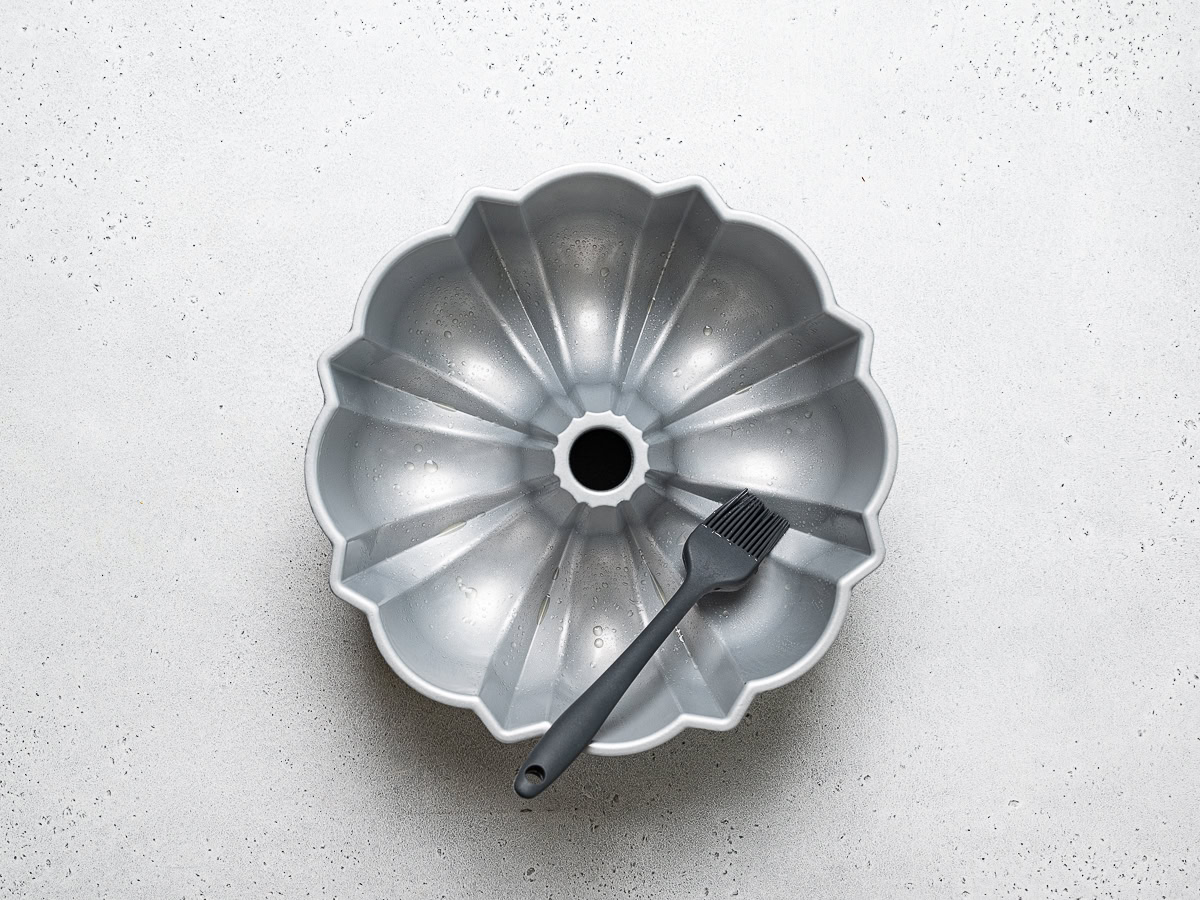
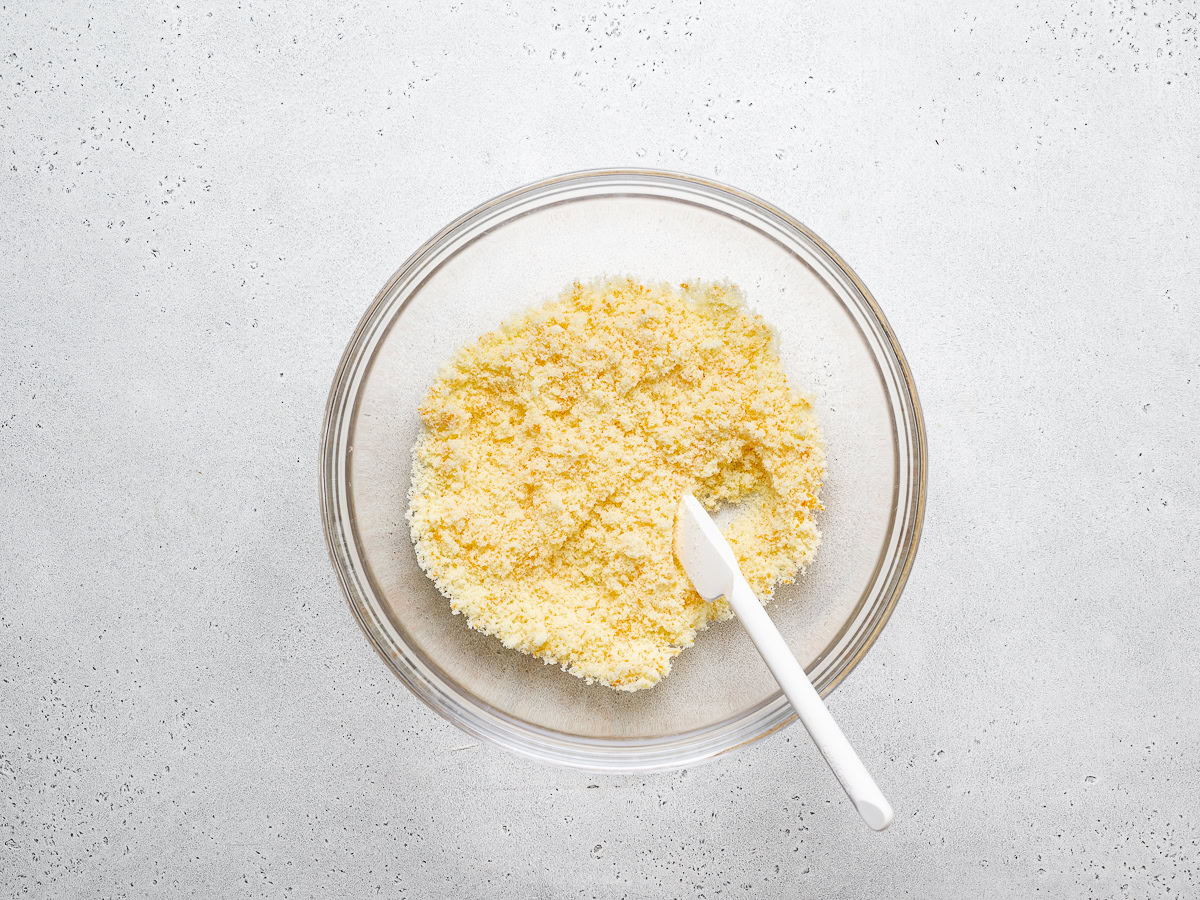
Add the eggs to the sugar mixture and whisk until creamy and lighter in colour, about 2 minutes. A hand held mixer or stand mixer will make this easier. Whisking, or beating, constantly, drizzle in the olive oil slowly. Then whisk in the yogurt, and mix until combined. Use a rubber spatula to fold in the flour mixture into the wet ingredients, and stir until just combined. It is okay for a few lumps to remain in the batter.
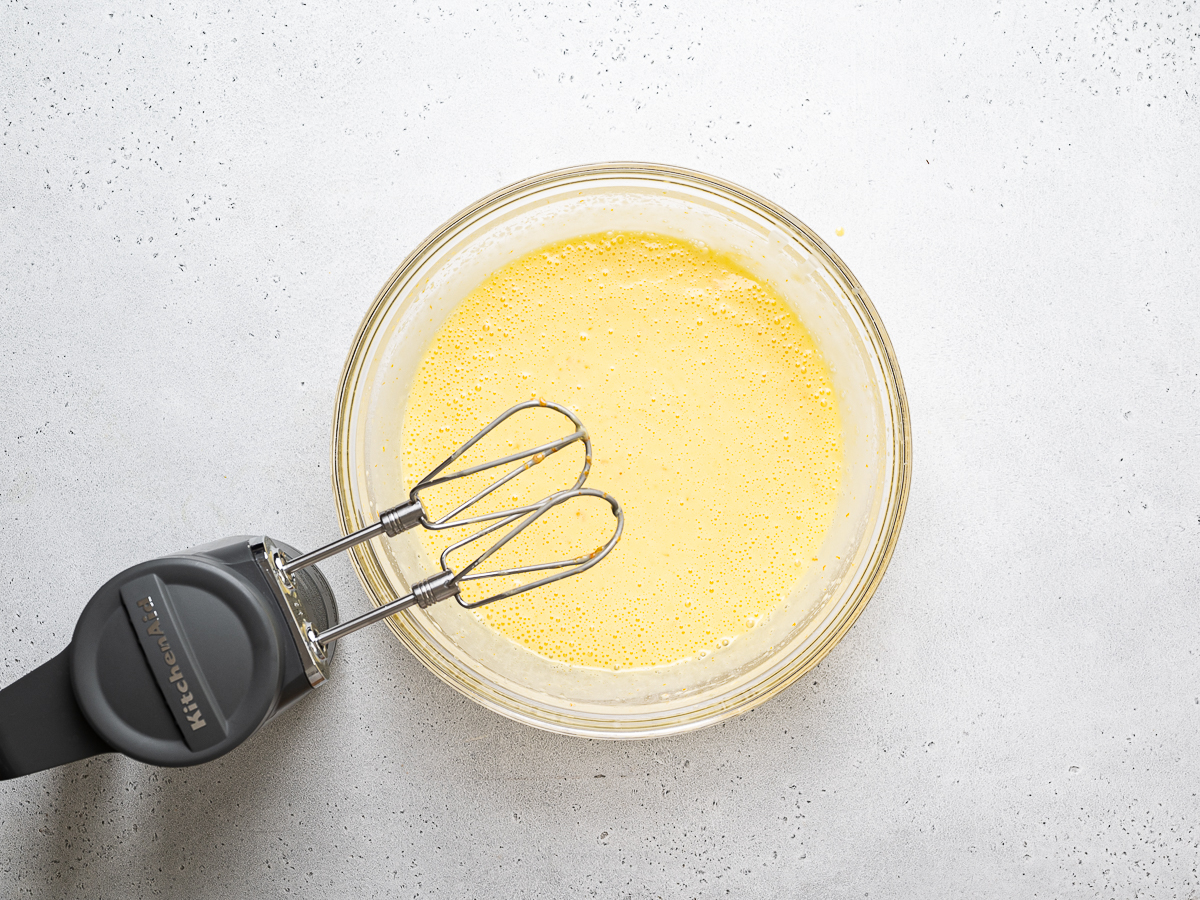
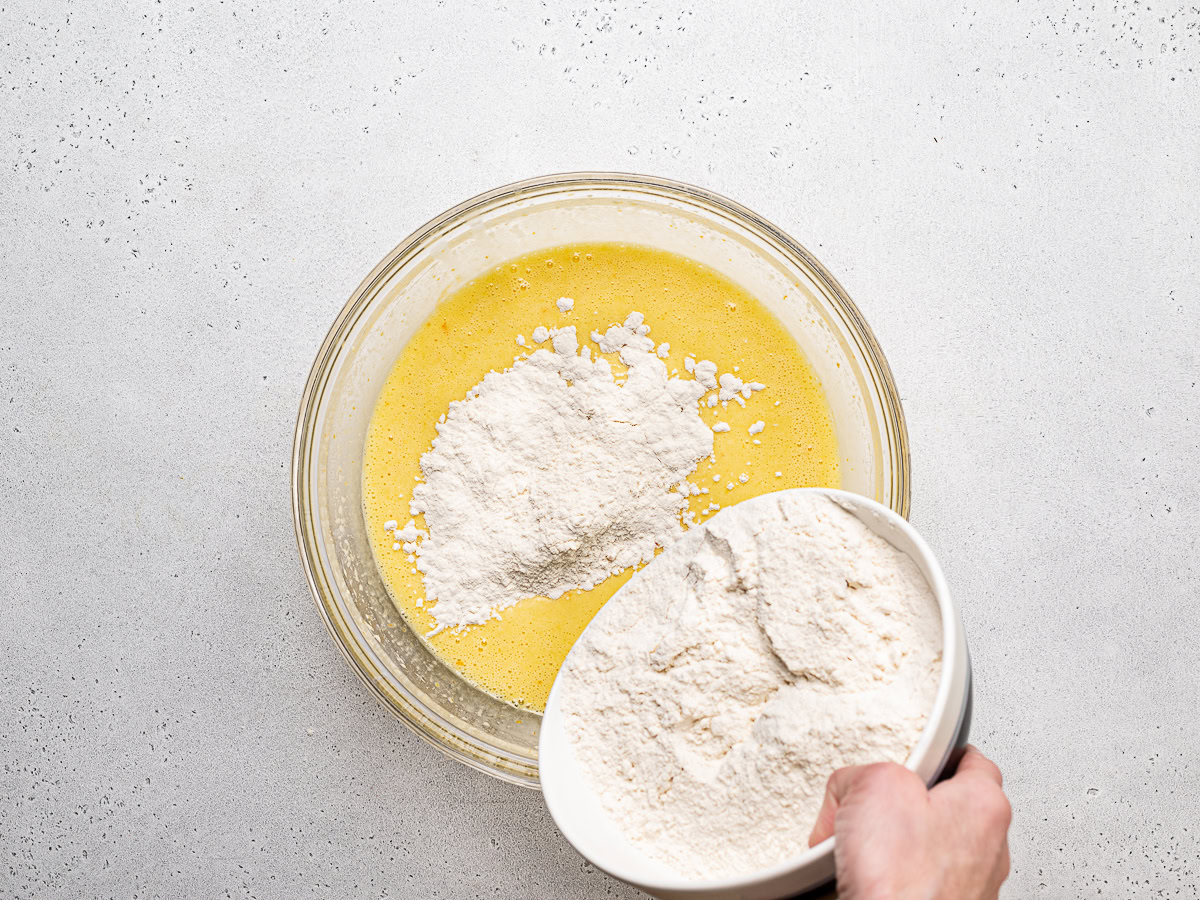
Pour batter into prepared pan, smoothing the top with a small spatula. Tap pan sharply on the counter to reduce air bubbles. Bake on the middle rack until a toothpick inserted into the center of the cake comes out clean, 45-50 minutes.
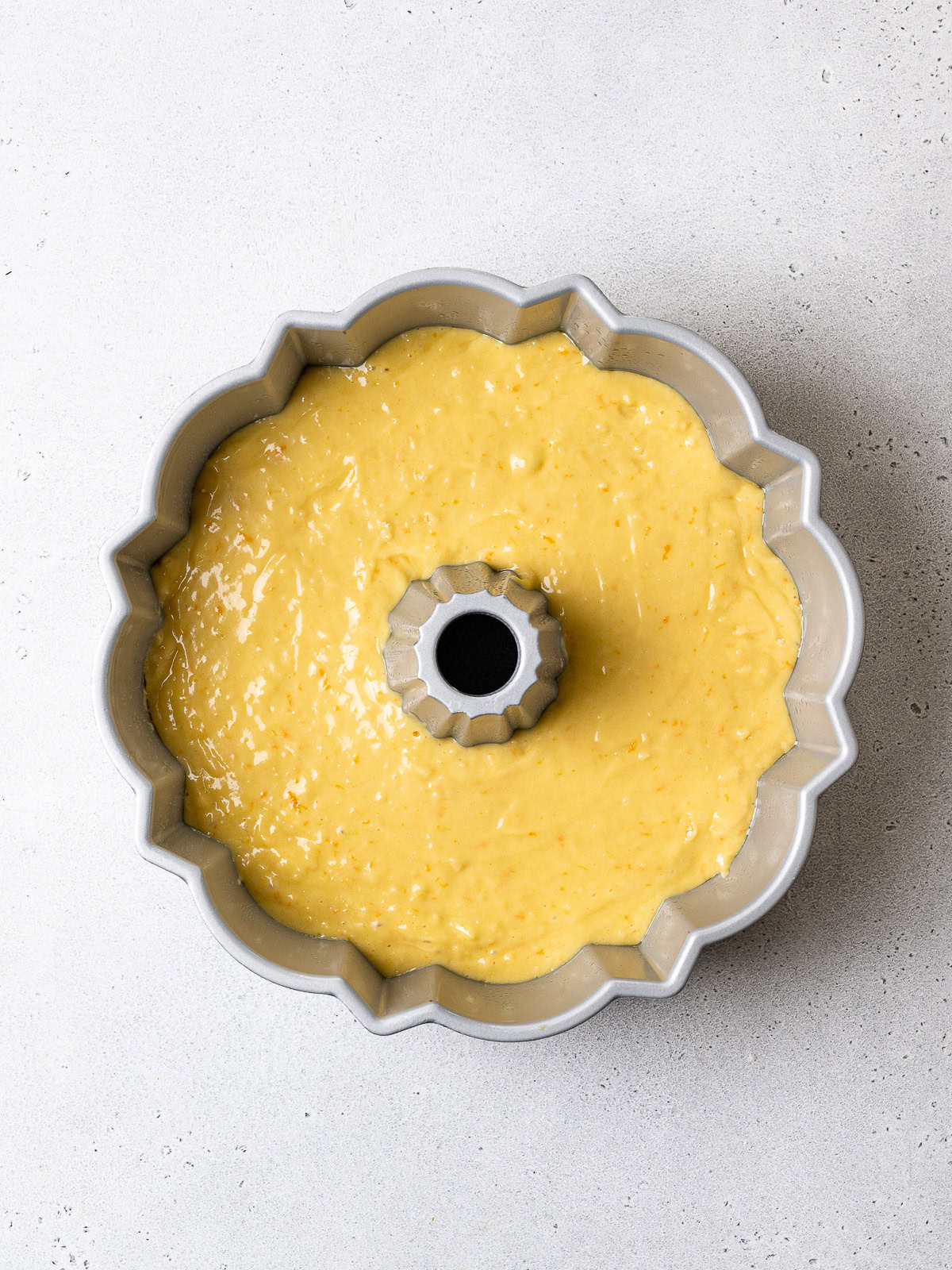
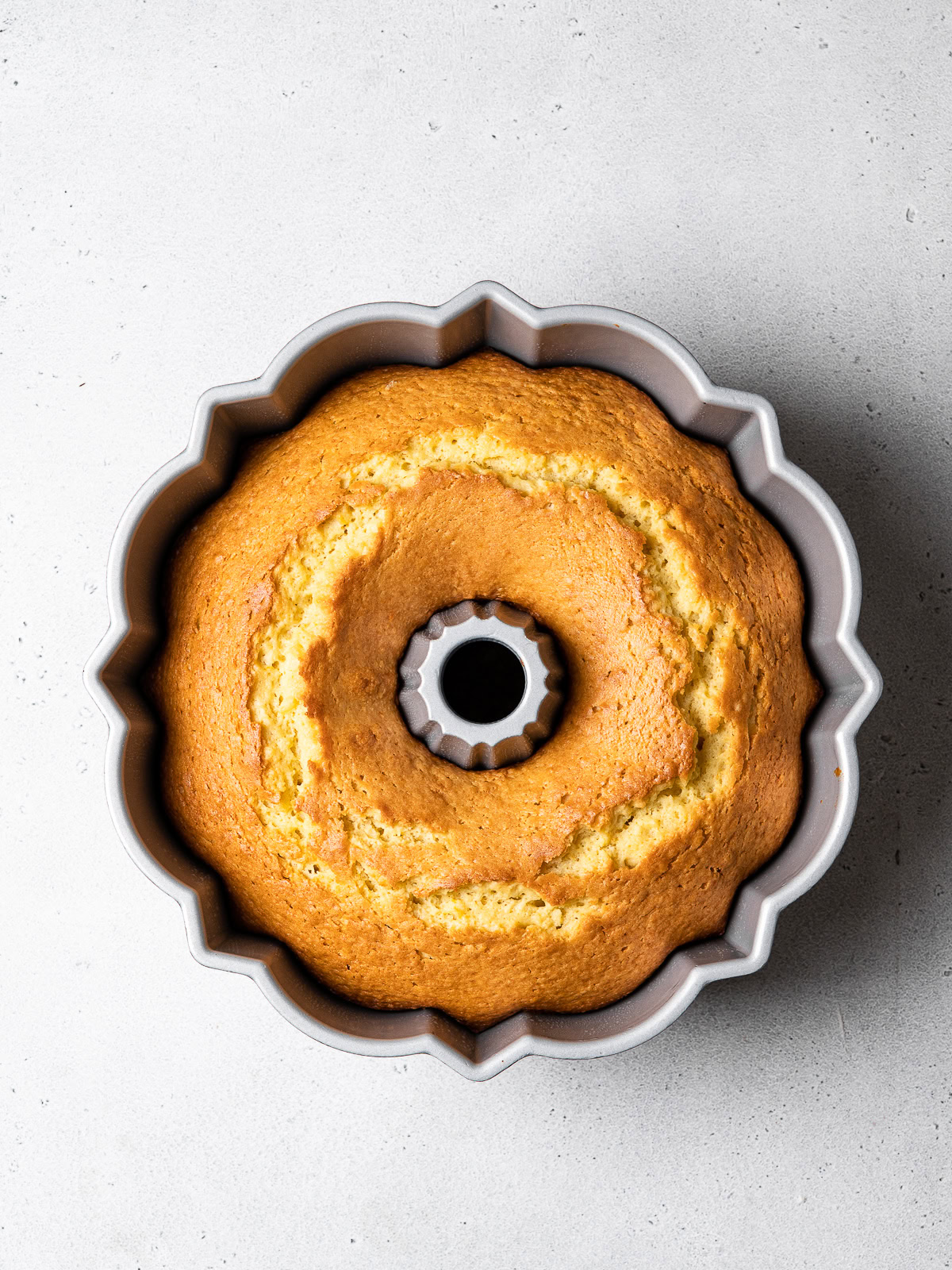
Allow cake to cool in the pan for 10 minutes. The edges of the cake should have released a bit from the sides by now but I like to run a thin knife around all the edges and inner tube for extra insurance that it will release. Carefully invert the cake onto a wire rack and cool completely before adding a glaze.
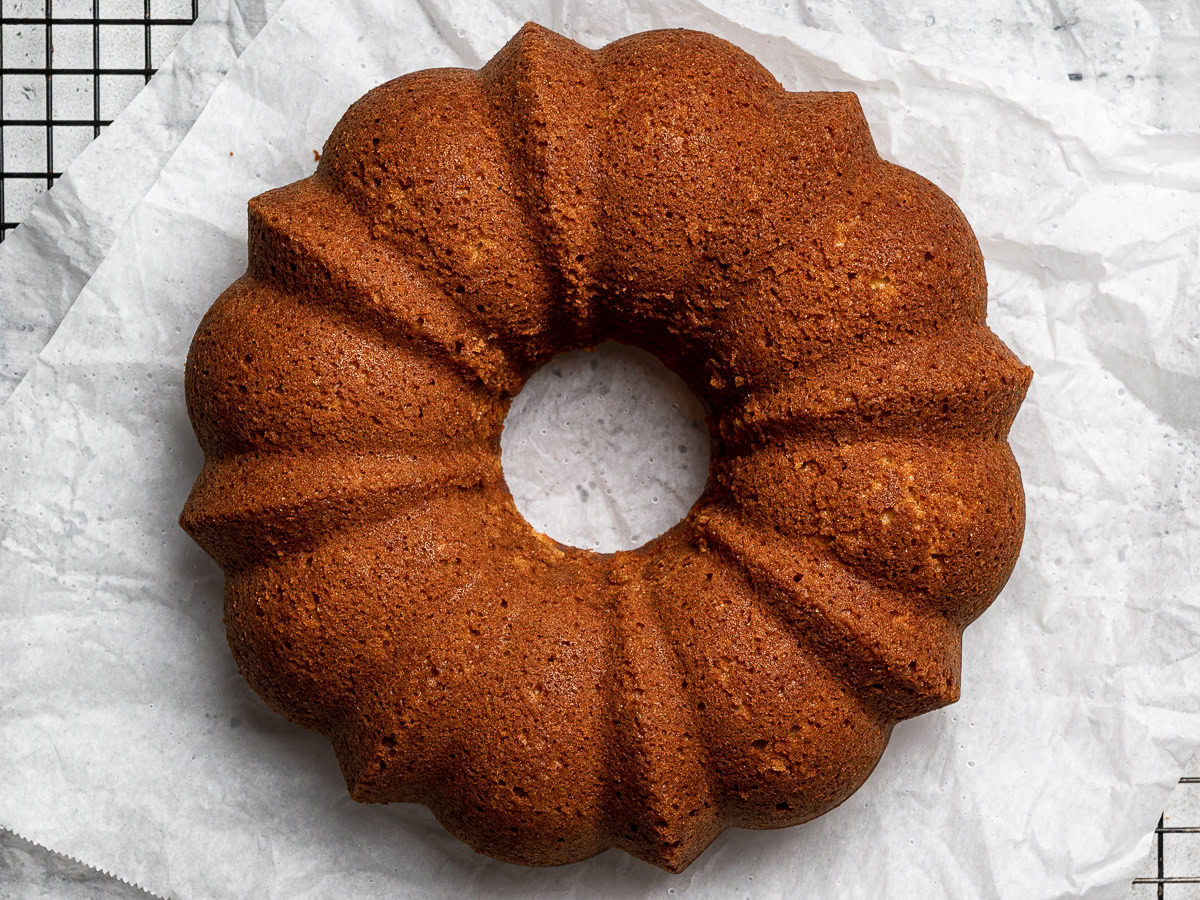
Make the glaze: In a medium bowl, whisk the blood orange juice, yogurt, powdered sugar and honey (if using) until smooth and silky. If the glaze is too thick, add a more juice, a teaspoon at a time until the glaze is pourable but still quite thick. Likewise, if the glaze is too thin, add a bit more powdered sugar.
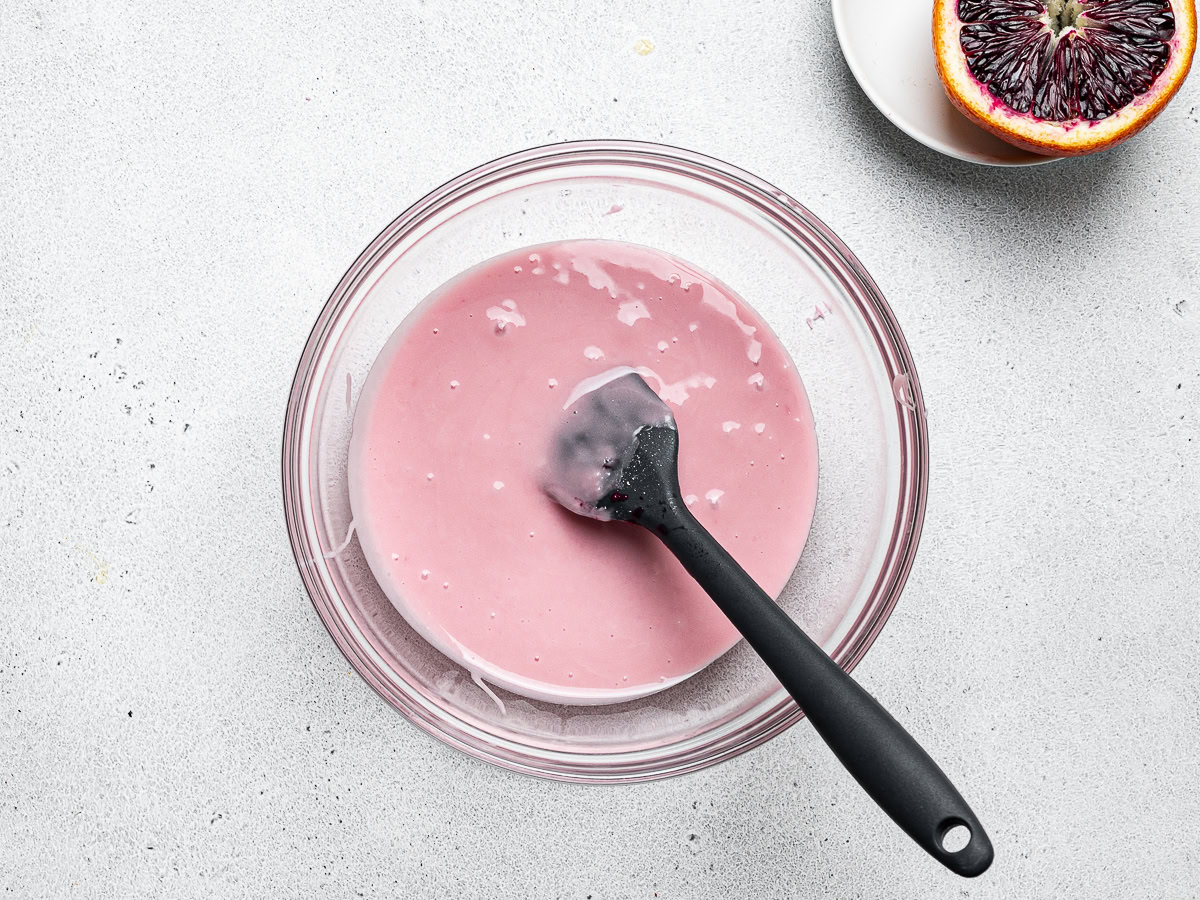
Once cake has completely cooled, transfer to serving dish and drizzle the glaze over the top. Let the glaze set for 10-15 minutes before slicing.
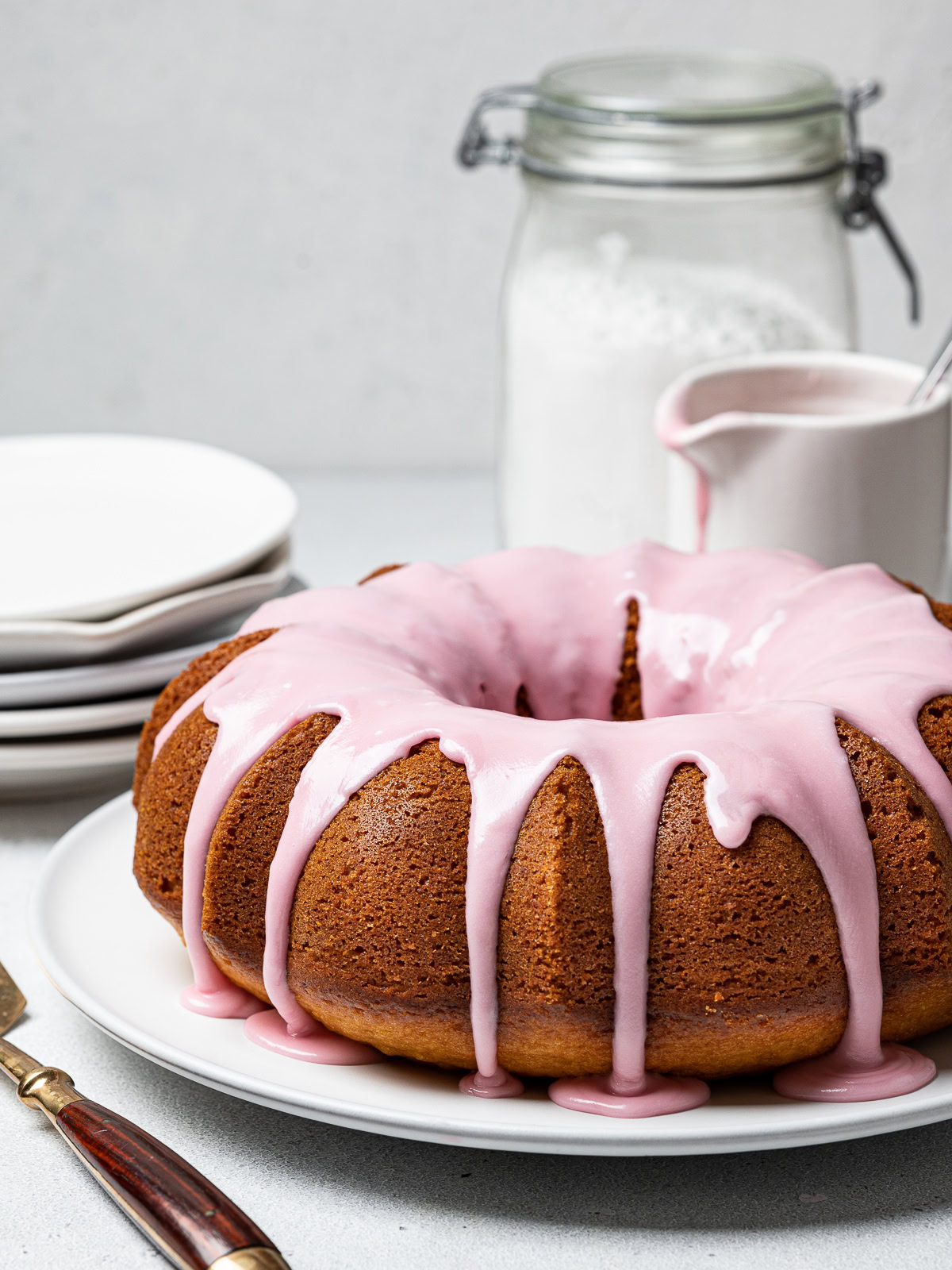
Bundt Cake Baking Tips
While you can bake this olive oil yogurt cake in other pans, a bundt pan is more traditional for this type of cake. A bundt pan will give the cake more volume and makes for a lovely presentation. All that said, some bundt pans can be a little tricky when it comes to inverting the cake. Here are my tips to ensure success:
- Grease the pan well, but do not use butter. Use a pastry brush to brush a thin layer of oil on the pan, making sure you get into every nook and cranny, including the tube. Alternatively, spray the pan with cooking spray. I am not a fan of cooking sprays but they really do come in handy for greasing a bundt pan.
- If the oil from spraying or brushing has pooled on the bottom of the pan, dab it away with a paper towel. Be careful not to wipe, just dab, so you don’t remove all of the oil.
- Use a good quality bundt pan. Nordic Ware makes really great heavy-gauge, non-stick pans and are my favourite to use for bundt cakes.
- Once baked, be sure to wait 10 minutes, but no longer than 10 minutes, before removing the cake from the pan. Any sooner and the cake will not release. Wait any longer and the cake has the potential to stick. I like to set the alarm for 10 minutes to avoid forgetting.
- Before you invert the cake, use a thin knife to go around the edges and inner tube. This will loosen any parts of the cake that might have stuck a little.
- To remove the cake from the pan, place a large cooking rack or cake platter on the top of the pan and invert the cake in one quick motion. Hopefully, the cake released easily from the pan. If it didn’t, go over the edges again with he knife and, while inverted, tap it all over with your hand until you feel it loosen.
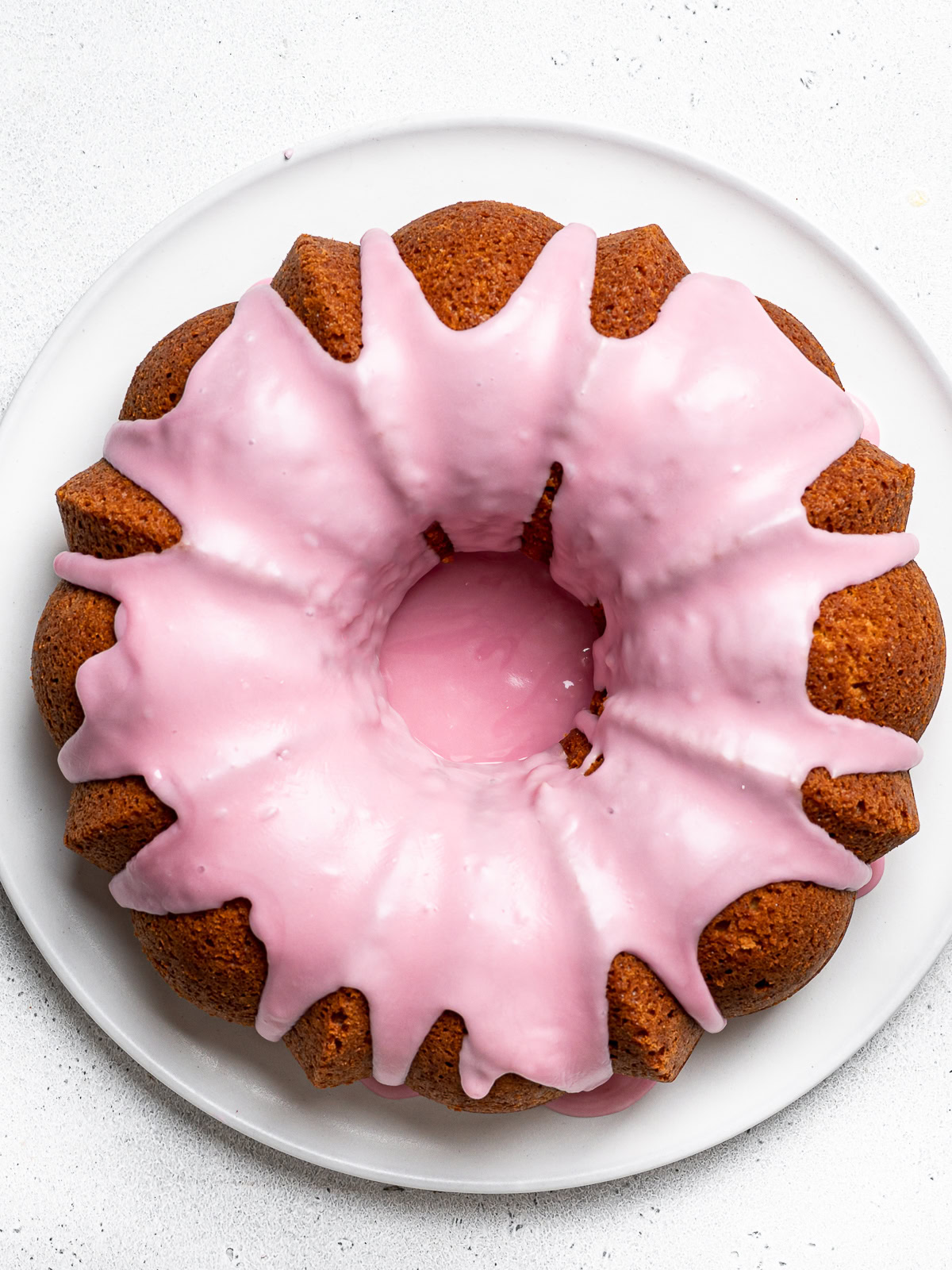
Recipe Tips
- Use room temperature ingredients. Room temperature eggs will emulsify with the olive oil a lot better than cold eggs. Same goes for the yogurt.
- For a really moist cake, use full fat yogurt. Anything from 3% and up.
- The extra virgin olive oil flavour in this cake is not very pronounced. That said, the flavour of a poor quality olive oil will come through strongly so use one that tastes nice to you.
- Don’t overcook the cake or it will be dry. Test it at 45 minutes and give it only 5 more minutes if you think it needs more time.
- If adding frosting, keep in mind it should be thicker than you think. Test it with a spoon and if it runs down too quickly, it is too thin. A thicker glaze will stay on your cake and not run down too quickly so add more powdered sugar if necessary.
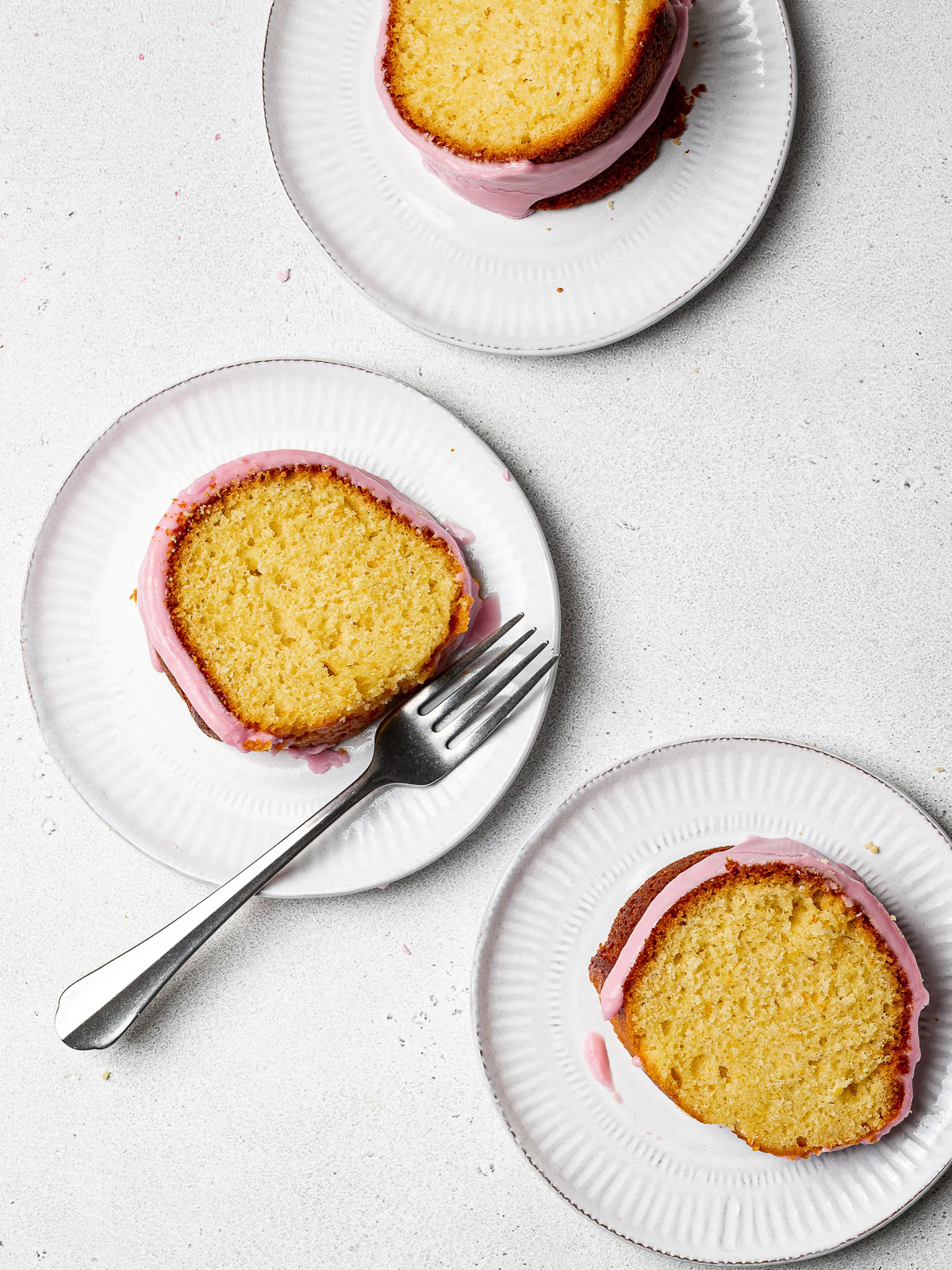
How To Store Olive Oil Yogurt Cake
To store cake: This cake can be stored, loosely covered, at room temperature for up to 5 days. After that, place it in the fridge, tightly covered, for an additional 2 days.
To freeze cake: This can also freezes beautifully. Once completely cooled, wrap tightly in plastic wrap then place in a ziplock bag, or freezer-safe container, and freeze for up to 2 months. Thaw in the refrigerator overnight and reheat gently in the oven to bring to room temperature.
Recommended
If you give this Olive Oil Yogurt Cake recipe a try, please feel free to leave a comment and/or a star rating below. We appreciate and welcome all your feedback. Thank you!
Olive Oil Yogurt Cake

Ingredients
- 3 cups all-purpose flour
- 1 Tablespoon baking powder
- 1 teaspoon kosher salt
- 1¼ cups sugar
- 1 1/2 Tablespoons blood orange zest (or regular orange zest. You can also use lemon or grapefruit)
- 4 large eggs brought to room temperature
- 1 1/4 cups extra-virgin olive oil
- 1 cup plain plain whole-milk yogurt, brought to room temperature
Optional Blood Orange Glaze
- 2-3 tablespoons blood orange juice, strained
- 1 Tablespoon plain unsweetened whole-milk yogurt
- 2 cups confectioners’ sugar, sifted
- 1 teaspoon honey (optional, but adds shine to the glaze)
Instructions
- Preheat oven to 350ºF.
- Use a pastry brush to grease a 10-12 cup Bundt pan with olive oil. Alternatively, spray the pan with oil spray.
- In a medium bowl, whisk together the flour, baking powder, and salt. Set aside.
- Add the sugar and orange zest to a large bowl. Using your fingers, massage the zest into the sugar until it is well combined. Add the eggs and whisk until mixture is creamy and lighter in colour, about 2 minutes. A hand held mixer or stand mixer will make this easier. Whisking, or beating constantly, drizzle in the olive oil slowly. Then whisk in the yogurt, and mix until combined.
- Use a rubber spatula to fold the flour mixture into the wet ingredients, and stir until just combined. It is okay for a few lumps to remain in the batter.
- Pour batter into prepared pan, smoothing the top with a small spatula. Tap pan sharply on the counter to reduce air bubbles. Bake until a toothpick inserted into the center of the cake comes out clean, 45-50 minutes.
- Allow cake to cool in the pan for 10 minutes (no less and no longer). The edges of the cake should have released a bit from the sides by now but I like to run a thin knife around all the edges and inner tube for extra insurance that it will release. Carefully invert the cake onto a wire rack and cool completely before adding a glaze.
- While the cake cools, make the glaze. In a medium bowl, whisk the blood orange juice, yogurt, powdered sugar and honey (if using) until smooth and silky. If the glaze is too thick, add a bit more juice, a teaspoon at a time until the glaze is pourable but still quite thick. Likewise, if the glaze is too thin, add a bit more powdered sugar.
- Once cake has completely cooled, transfer to serving dish and drizzle the glaze over the top. Let the glaze set for 10-15 minutes before slicing.


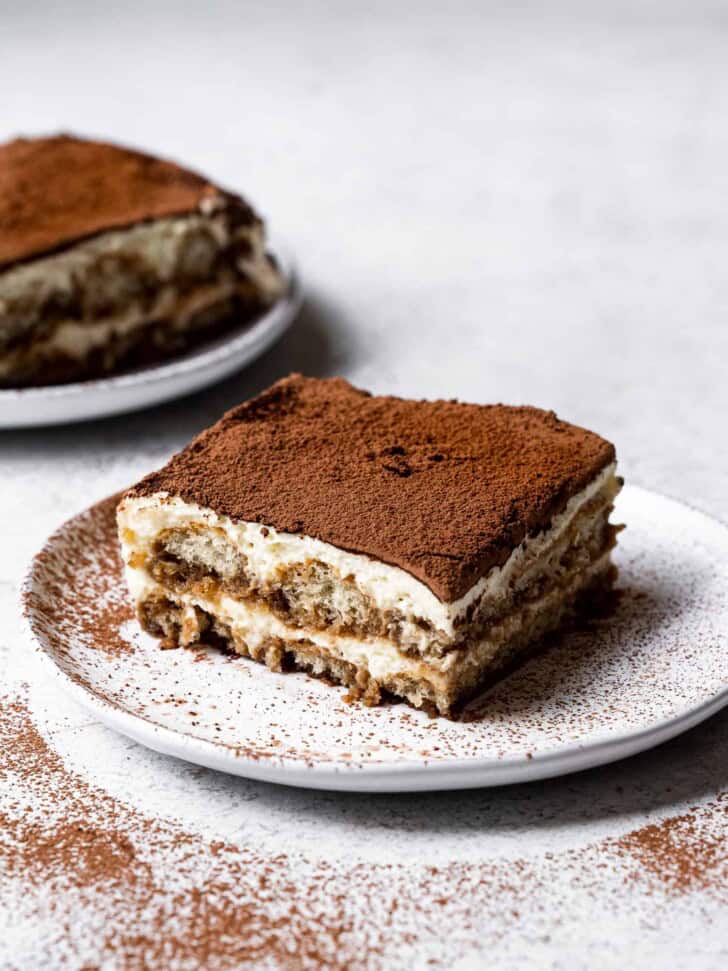
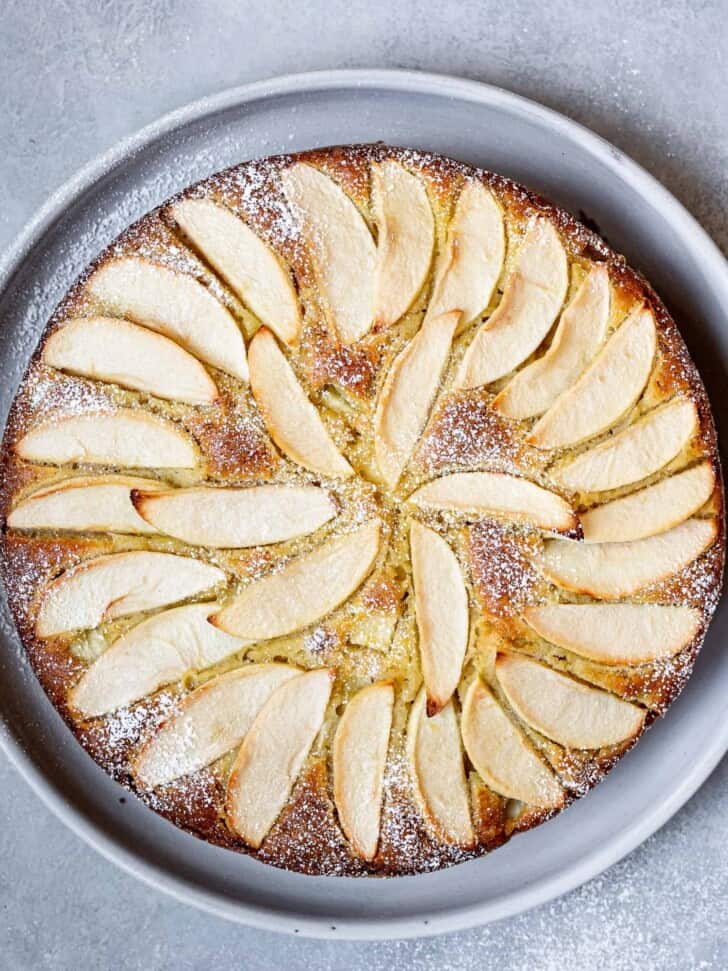
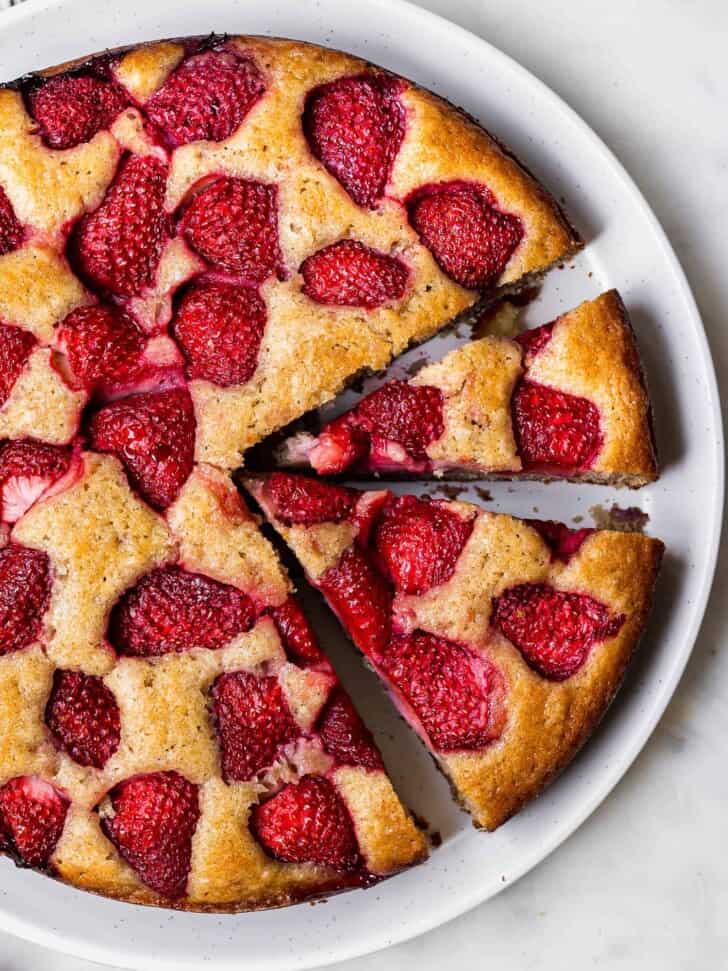
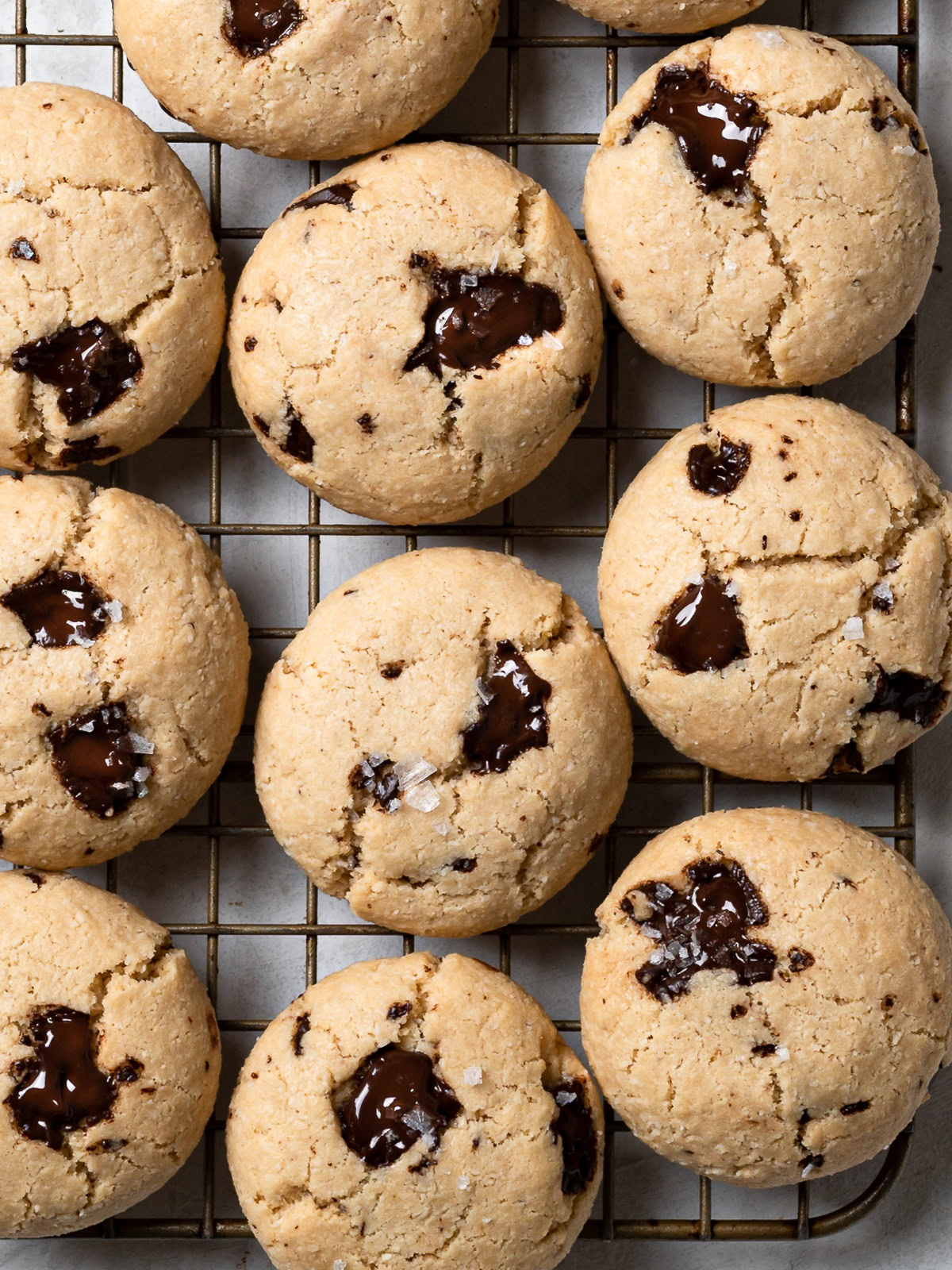

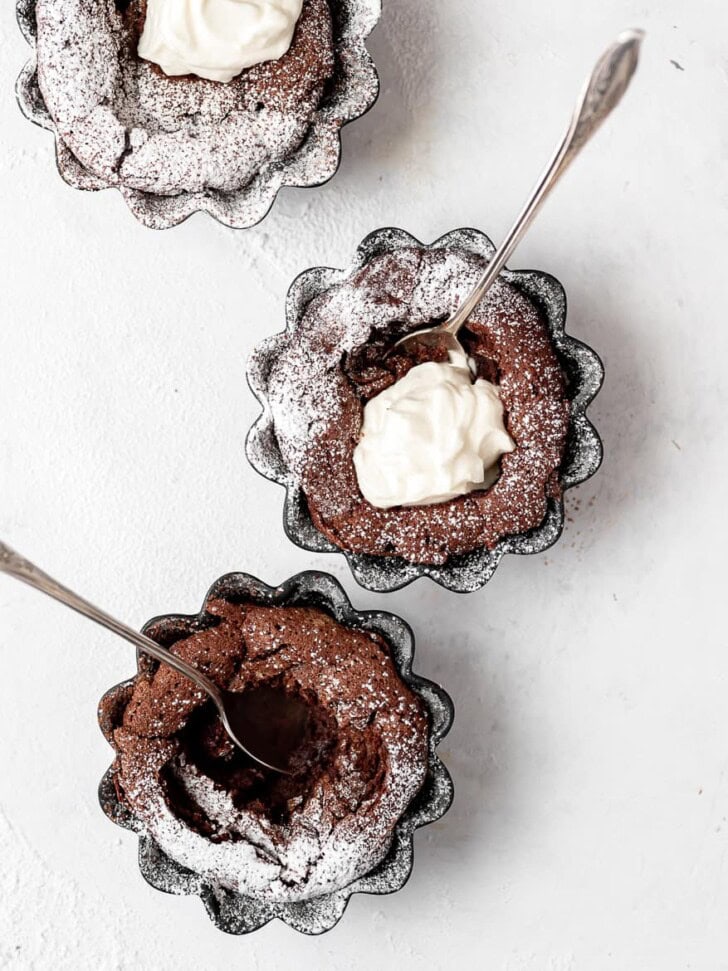
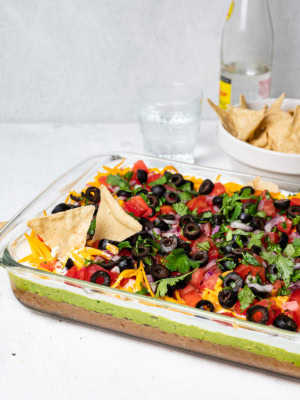
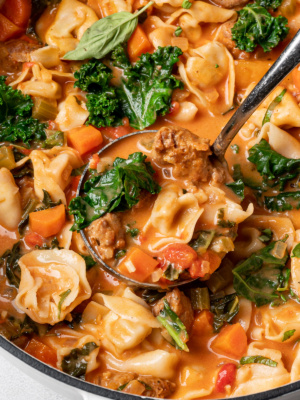

Camila
Hi! The measurement for olive oil is missing in the recipe — how much is it? <3
Sandra Valvassori
Oh no! So sorry about that! It’s (1 1/4 cups) – fixed now! Abrazos Camila!🥰